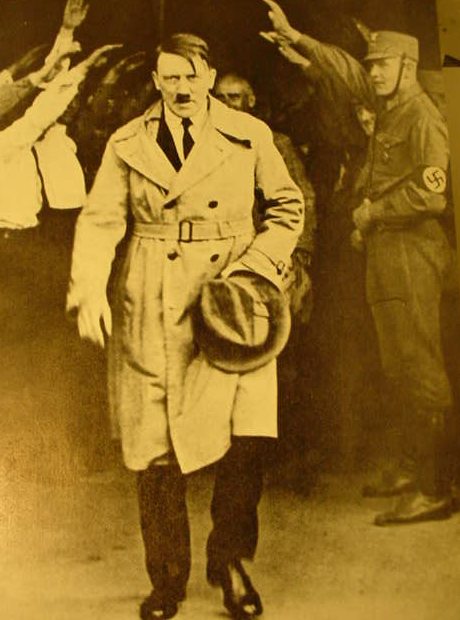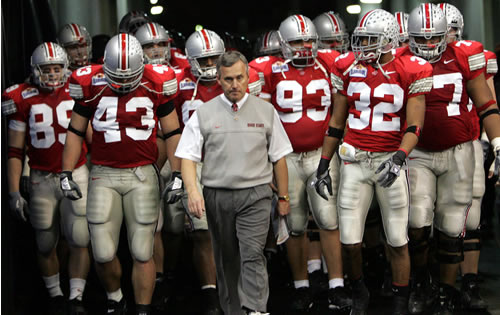Monday, May 31, 2010
Argument Freewrite
A (non-specific) country is in the middle of a war. Unlike wars in the past, this war is constantly being covered by the media. In order to avoid public panic and protect civilians, the leader of this country banned the publication of images depicting the return of dead soldiers' coffins. Is this protection or censorship?
Tuesday, May 18, 2010
Friday, May 14, 2010
Visual Analysis
Wednesday, May 12, 2010
Tuesday, May 4, 2010
Sunday, May 2, 2010
Amanda's Essay for Peer Review
Amanda Olszewski
When first given this assignment I was at a loss as to what issue I was going to focus on seeing as though Communications is a very broad topic of study. My first thought went towards the way our communication is changing due to advancements in technology and the Internet, but then I felt that topic has been beaten to death lately and I didn’t need to add to it’s execution. I then started thinking in terms of communications in the business aspect, since I am also a marketing minor. This got me looking around at different sights, stumbling upon things like “How to Improve Communications within Management,” and “Proper Business Communication and Etiquette,” all things that did not strike my interest or any passions of mine enough to produce anything fruitful. And so, I digressed; looking for something that, stuck my interest, but was still foreign enough to me that I would not bring in my own biases into the mix. That got me thinking about the growing concern about environmental issues. Being a self proclaimed environment concernist, I decided to plug in the terms “Public Communications” into the Environmental section of the library search engine. This lead me to articles voicing the growing concern with the way science is being communicated to the public. They mentioned the challenges being faced due to the increase in content choices being put out by the media. This sounded like the perfect topic for me; something dealing with the environment and communications. So then it was time to narrow down my search. After pondering the topic for a while I decided to pursue the question, Will increasing/improving communication between scientists and the public, increase social involvement in environmental issues? This is worth researching to me because I believe that in order to make serious changes in the way we use and treat our environment, the more important it is to inform the masses of the challenges and changes we face in terms they can understand.
In starting my research I decided it would be important for me to first understand the current standards and struggles being faced by science communication. I began by searching “Effects of bad communication between science and the public,” and found a very useful article about the protocol of science communication. The article was coincidentally titled “A Protocol for Science Communication for the Public Understanding of Science,” which came from an excerpt from Steve Miller and Jane Gregory. Science in Public: communication, culture and credibility, and helped give me a good understanding about what is coming to be expected of both scientists and the public when dealing with the issue of communicating science through different media. The article started off talking about how scientist’s role in communicating with the public has changed due to the changes in political and social circumstances. Claiming that people are being influenced by so many different mediums giving them many different sources of information and leading them to many different opinions and information. They then started talking about the current relationship between scientists and the media. Their next point was one I had never really thought about and that was that the media, although it does in fact serve as the middle man in most cases between scientists and the public, they are not responsible in increasing the publics understanding of the sciences and all it’s essentials. Another new pattern this article brought to light for me was that since media today is so “I want it not” most of the science being preformed is in the moment and does not always have an answer right away. So when people are reading about these in the now sciences being studied and they don’t have and exact answer yet, they tend to make up their own ending to the experiment and rarely return to the issue when the experiments are completed. This to me gave insight into some of the challenges scientists are facing in trying to get their finding out there and understood. The article continues to give the following seven “protocols” for effective communication: 1.) Acknowledge the Place of Popularization 2.)Being Clear About Motives 3.) Respecting the Audience 4.)Negotiating New Knowledge, Understanding and Attitudes 5.) Establishing a Basis For Trust 6.)Acknowledging the Social in Science 7.) Facilitating Public Participation. These points set standards, suggest improvements for science communications and give direction to both the public and to scientists as to how to meet half way when communicating to each other. So by now I have gained a pretty good understanding of the changing relationship and responsibilities of both the scientist and the public when trying to better understand one another, but this information also lead me to think, If the media is demanding answers before they were able to give them, and the people are demanding the media to give them answers, and the media needs people to buy their magazines, how can scientists make sure their discoveries are being properly exposed?
Helping hands?
Critical Preface You got hurt. You just had surgery, now what? The next step in the health care profession after incidents such as these is rehabilitation. This is where people turn to Physical Therapy for a faster and better recovery. A therapist is known as a movement specialist that helps recovering patients from any type of accident or injury. Rehabilitation usually ranges from any part of your body from head to foot. There are many techniques and methods for the patient to use while attempting to get back to full health. The profession has been an ever growing field of work for hospital systems since the end of WWII. During its growth, new branches such as Massage therapy and Occupational therapy, have gone hand in hand with the medical fields. My major is Pre-Physical Therapy, so to look into this topic a little more about how the job is done will help me answer some of my questions that I have about its uses. We have all had some type of personal experience where we either got hurt or needed surgery. Resulting from this, doctors have probably requested you to go into a type of rehab center so they can evaluate your progression in the healing process. The problem that has slowly crept up in studies today is that of the benefits of this line of work. Now this is where I would like to find out the answers to some of my questions: (1) Are all types of health related injury actually worthwhile for a therapist to do work on? (2) Is there solid beneficial factor to the patients’ participation of the therapy? (3) Is there actual data to show patients improvement with their problem? And (4) Is there a mental aspect of the healing process? These questions need to be answered, not only for me but for others, so that they too can see my results of the research. I have currently been looking over research during late April, and early May 2010, ranging over many topics on this subject. I have viewed academic journals that I will be using as my sources for my annotated bibliography. After viewing many sources for my annotated bibliography I will be mainly using academic journals. I did find all of my sources to be helpful to obtain the answers I was looking for in my work.
Annotated Bibliography
Carpentier, Jim. “Therapy Can AND CANNOT DO.”American Fitness 28.1 (2010): 52-53. Academic Search Complete. Web. 30 April. 2010. This article covers the Massage side of therapy. In the article Carpentier clearly states on both sides of the argument of what massage therapy can and cannot do. We learn that there is an”Sports-Message” that is only 15-30 minutes in length, used for one or two main parts of your body while the “Swedish-Massage” 30 minutes to an hour in length will go over your entire body. It is noted that positive results from these two types of massage will (1) Alleviate pain in patients. (2) Lowers stress hormones. (3) Lessens depressive symptoms. (4) boost immune system. (5) improve muscle flexability and recovery. To the other side of massage therapy, the disadvantage can come from different directions. To say you got freshly hurt, massage would only worsen the injury that occurred by aggravation. Also any type of massage is proven to not help protect against injury. Having an article being up to date such as this makes it worthwhile and valid for a good source to use.
“People With Diabetes Benefit From Exercise at Work.” Magazine of Physical Therapy 12.10 (2004): 69-70. Academic Search Complete. Web. 2. May. 2010.
This article I found to be quite interesting when looking up research for this topic. I can across this article about an ongoing research study with people diagnosed with Type-2 diabetes. After many clinical hours of work lead researcher Gang Hu of the National Public Health Institute has found a link between diabetes and working. While around 3,000 people attended this study, sadly only 1,400 lived to see the results. Therapists took measures of peoples work field and their blood count levels. As the study showed participants who were linked to have a “light” job such as office work, were reported with higher rates of health problems. The people in the middle reported moderate. But the workers who had “active” jobs ended with the best health. Once the numbers were all calculated and straightened out, findings shown that with just a little more effort in the work field will result in a better record of health. Therapists who helped conduct the study also saw less conditions of linked stress and pains with patients how had more active job. While taking this all in this helped me realize that this article was good because it had reliable numbers and facts from great sources.









